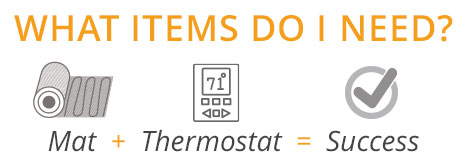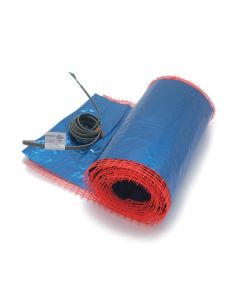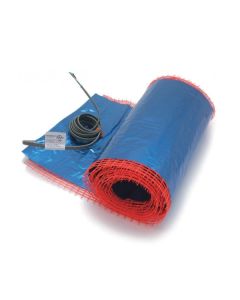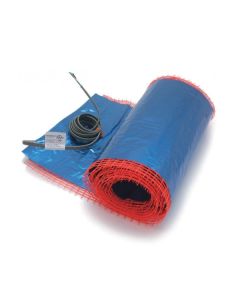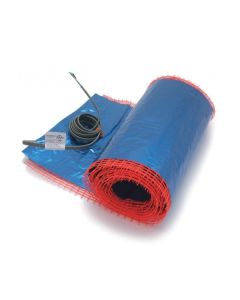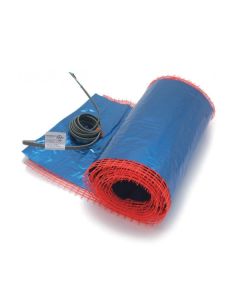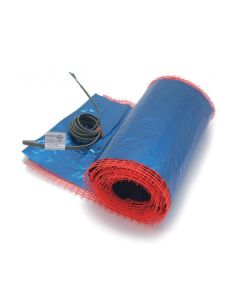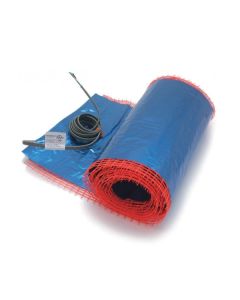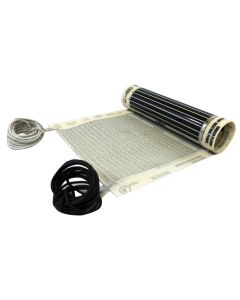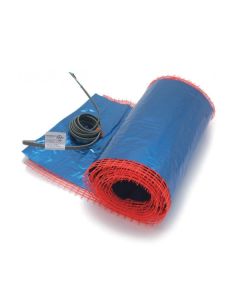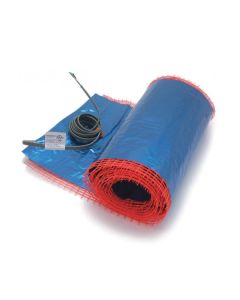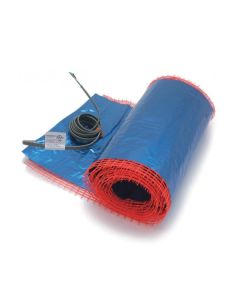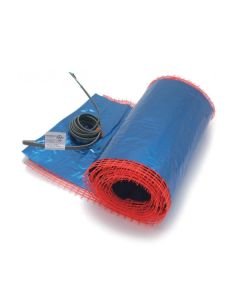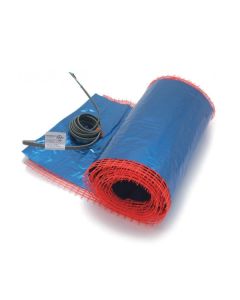-
+ Free Shipping!
Retro-Fit Joist Mats are safe and efficient radiant electric floor heating systems retrofitting an existing cold floor with heat without disturbing the existing floor covering. It’s best for anywhere the joists can be easily accessed, such as a garage ceiling or from your basement or crawl space.
We offer multiple sizes and various widths to fit most types of joist bays.
What does it mean to retrofit radiant floor heating?
Retrofit is the process of adding radiant floor heating to an existing building or home. This innovative heating solution is gaining popularity among homeowners looking to upgrade their heating systems without the need for major renovations. With retrofit radiant floor heating, you can enjoy the cozy warmth of heated floors in any room.
Installing retrofit radiant floor heating involves minimal disruption to your existing space, making it a convenient option for those looking to enhance their comfort levels. Unlike traditional forced-air systems that rely on ductwork, retrofit radiant floor heating uses a network of electric heating elements placed beneath the floor surface to evenly distribute heat throughout the room.
Installation Process for Retrofitting Radiant Floor Heating
Starting the process of adding radiant floor heating to your home can be exciting. However, it’s important to understand the necessary steps to ensure a smooth installation process.
Step By Step Process
Beginning with a clear roadmap of the installation process is imperative for retrofit projects. The pivotal steps include:
-
Assessment: Conducting a thorough evaluation of your existing flooring structure to ensure compatibility with radiant heating. Always check the manufacturer guidelines before purchasing or installing radiant floor heating.
-
Planning: Creating a detailed plan and layout for the heating elements, considering the rooms and zones to be heated.
-
Joist Work: Gaining access to the joists from below the floor and preparing them for the installation of the heating system.
-
Heating Element Installation: Laying down the electric radiant heat mats or cables according to the plan.
-
Electrical Connections: Connecting the heating system to the power supply and installing thermostats.
-
System Testing: Testing the thermostat and heating system to ensure everything operates correctly.
-
Insulation Placement: Applying insulation to maximize heat distribution upwards into the rooms is recommended.
The Role of Joists and Insulation
Floor joists play a central role in the retrofit process. This approach typically involves attaching heating elements directly to the underside of the subfloor between the joists. Insulation is then subsequently added beneath the heating elements to minimize heat loss downwards and direct the warmth upwards into the living space.
Best Practices for Ensuring Efficient Heat Distribution
An effective retrofit not only lies in installation precision but also in optimizing heat distribution. Strategic positioning of the heating elements and comprehensive insulation are crucial. Here are some best practices:
-
Avoid Obstructions: Keep heating elements clear from obstructive objects like furniture to promote the even spread of warmth.
-
Thermal Mass: Consider the thermal properties of your flooring material; denser materials retain heat longer, aiding in efficient distribution.
-
Reflective Layers: Utilize reflective barriers beneath the heating elements to efficiently direct the heat upwards.
-
Consistent Testing: Perform regular tests during installation to detect any problems early on, ensuring the heat flows smoothly across the entirety of the floor.
Zoning and Controllability of Radiant Heating
Retrofit radiant floor heating systems provide not just a consistently warm environment but also offer enhanced control through zoning. But what exactly does zoning entail? Zoning is the division of your living space into different areas or ‘zones,’ each with independent temperature control. This approach allows for targeted heating, meaning you can maintain varying temperatures in different rooms or zones according to your specific needs.
The Power of Temperature Management
Zoning is a game-changer when it comes to heating efficiency and user comfort. In traditional heating systems without zoning, you may frequently find some rooms are too hot while others are too cool. Zoning eliminates this problem by letting you customize the temperature for each area—resulting in a more comfortable living environment and, often, in significant energy savings.
State-of-the-Art Temperature Control Technology
The technology used in modern radiant floor heating systems is sophisticated yet user-friendly. Typically, thermostats are installed in each zone to monitor and control the temperature.
In electric radiant floor heating systems, it’s often a matter of adjusting the electrical input to heating cables or mats responsible for different zones.
Advanced systems can be integrated with smart home technology, allowing you to adjust settings remotely using a smartphone or tablet. This integration not only makes it easier to manage your heating system but also contributes to energy efficiency, as you can turn down the heating in unused zones with the touch of a button, no matter where you are.
Zoning and controllability are key aspects that make retrofit radiant floor heating an attractive option for homeowners looking for comfort and efficiency. Properly implemented, these systems can provide personalized heating tailored to your lifestyle while keeping energy usage in check.
Retrofit Options from Warm Your Floor
SunTouch UnderFloor Mats
SunTouch’s unique UnderFloor mats are available in both 12-inch and 16-inch widths to fit common joist bay sizes. High-quality UnderFloor mats are made with ETFE insulation and oxygen-free copper alloys that prevent corrosion and give you warm, luxurious floors for years to come.
To use SunTouch UnderFloor mats under a suitable indoor-only floor, you’ll first need to be able to access the joist bays under the existing floor. Staple the orange mesh on the edges of the mats to the joists so that the mat hangs 2 inches from the subfloor above. Install mats wherever floor warming is desired, as they supply heat to the floor directly above the mat only.
Next, install rigid insulation, such as fiberglass or foam board (not spray-foam), with an R value of 13 to 19.
Finally, have a licensed electrician wire the mats to a junction box and connect it to the thermostat of your choice. For the most efficient use of your new SunTouch floor heating system, we recommend SunTouch programmable thermostats, so floors are warm and ready for you whenever you like.
QuietWarmth Retrofit Mats
QuietWarmth features a patented ultra-thin conductive ink technology that delivers low-cost heat to nearly any floor type from the joist bay beneath.
When it comes to QuietWarmth Retrofit mats, installation is easy. Simply nail or staple each panel of heating film at least every 12 inches to the side of each joist (not to the subfloor itself), leaving a 2-inch overhang beneath the subfloor. To better fit your space, QuietWarmth film can be cut with scissors to length at each 12-inch increment.
Helpful Resources
A Contractor's Guide to Upselling Retrofit Radiant Floor Heating
Same Day Shipping. Orders over $149 Ship Free!* (Details)

Checkout using your account
Checkout as a new customer
Creating an account has many benefits:
- See order and shipping status
- Track order history
- Check out faster
Retro-Fit Joist Mats
Retro-Fit Joist Mats are safe and efficient radiant electric floor heating systems retrofitting an existing cold floor with heat without disturbing the existing floor covering. It’s best for anywhere the joists can be easily accessed, such as a garage ceiling or from your basement or ... READ MORE

